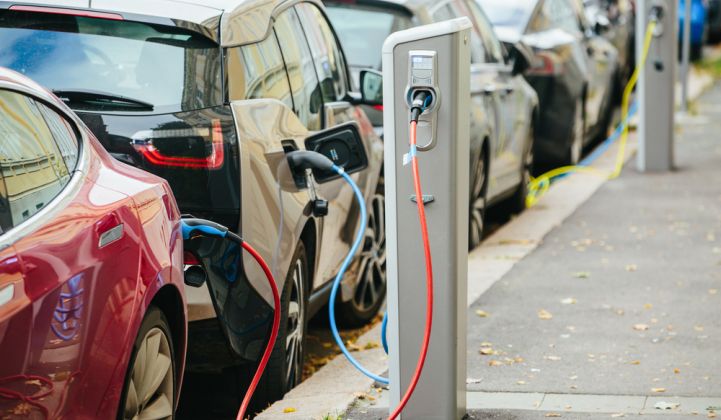Pull into a gas station and you know you’re dealing with a company in the oil sector. But if you fuel up your electric vehicle, the fragmented nature of charging infrastructure ownership means that any of a range of players could be taking your money, a GTM Research report shows.
GTM Research predicts that more than 1 million public charging points will be deployed globally by 2020, while residential charging points will surpass 5 million in 2020.
Charging infrastructure for EVs has created "a new web of market players,” according to the new report, entitled EV Charging Infrastructure Landscape: Global Market Evolution, Major Stakeholders and Key Trends.
Report author Timotej Gavrilovic said governments, utilities, oil companies, independents and charging technology developers are all moving into the sector, with no clear leaders at present.
The most notable trend of late has been oil companies muscling their way into the EV charging space. This month, for example, an oil company-backed startup called Ample raised eyebrows with a $31 million Series A funding round.
The company, which claims to offer an alternative to traditional charging that may or may not involve swapping out batteries in EVs, saw Shell Ventures leading the finance push and Spanish oil concern Repsol joining in.
In June, meanwhile, BP snapped up Chargemaster, Britain’s largest EV charging company, as part of plans to roll out chargers across its U.K. service station network over the next year.
The idea of oil companies buying into EV charging “is a very reasonable one,” said Gavrilovic. “It’s a way to hedge the risk. As there might be some decrease in demand for gasoline, they can make up the balance with EV charging. There is a natural opportunity there.”
The push into the EV charging infrastructure market mirrors recent oil company moves to increase the proportion of renewables in their portfolios, as exemplified by trading firm Vitol’s decision to partner with Low Carbon on the development of renewable generation.
However, in renewables, as in EV charging, it remains unclear to what extent the investments being made by the oil industry are of a strategic nature.
Since the amounts involved are minor compared to those for mainstream oil and gas operations, it is possible that the interest of the majors is driven more by PR than strategic intent.
Meanwhile, another group that at present has perhaps more of a hard-nosed interest in moving into EV charging is the utilities.
These companies are in the business of selling electricity, and at a time when regulation and public sentiment is tending toward lower consumption, the prospect of EV charging offers a chance to hold onto revenues.
The way the utility sector approaches EV charging has changed over time, though. In the U.S., said Gavrilovic, utilities started out with a build-own-operate model.
Now, however, they are moving to a hybrid model where they make it easier for third parties, from EV charging networks to businesses with large vehicle pools, to connect their own infrastructure to the grid.
Gavrilovic said that model is going to probably grow in the U.S., as long as the utilities are able to maintain some level of control over charging patterns, so that the infrastructure does not affect grid operations and could instead be used for demand-side response programs.
In Europe, he said, utilities have been even more aggressive in driving EV charging infrastructure growth. Alongside utilities, major EV markets have also seen the rise of specialist charging networks, some associated with charger technology makers.
“The network operators are really the ones to keep an eye on,” said Gavrilovic. “Our prediction is there is going to be consolidation, as with solar and other alternative fuels, and we’ve seen some network providers go under.”
Given current rates of growth, Gavrilovic said utilities could end up owning the lion’s share of public EV charging points, followed by oil companies and independent operators.
Finally, the public sector, which was an early mover in many EV charging infrastructure build-out programs, will continue to add capacity, said Gavrilovic. “What we will see more is that shifting down to the municipal or state level, as opposed to the national or federal level,” he said.
“The work is going to go to a lower level of government," said Gavrilovic.




